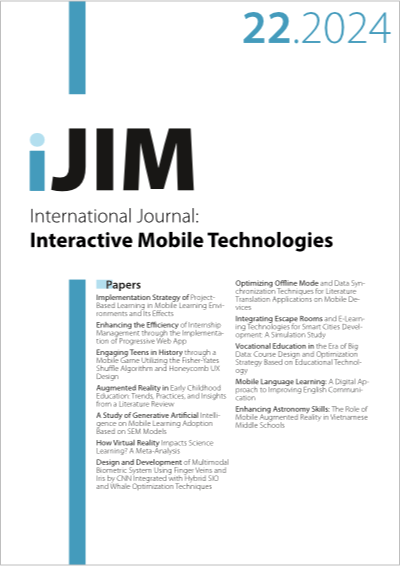Engaging Teens in History through a Mobile Game Utilizing the Fisher-Yates Shuffle Algorithm and Honeycomb UX Design
DOI:
https://doi.org/10.3991/ijim.v18i22.50705Keywords:
Game, Fisher-Yates Shuffle Algorithm, Honeycomb UX, Historical Educational Game, SmartphoneAbstract
This study uses the Fisher-Yates shuffle (FYS) algorithm and the Honeycomb UX method to create a smartphone game to engage teens in history learning. Gaming technology has improved rapidly, creating more compelling educational techniques. Educational games are designed to boost students’ computation and cognition. Few studies have merged FYS and Honeycomb in mobile history instructional games. This study uses an innovative technique to instruct young people about history. Smartphones are developed and evaluated using the FYS for randomization and the Honeycomb UX for user experience. Few studies have integrated these two aspects into mobile educational and historical games. According to a survey, this game improves teen historical knowledge and interest. Honeycomb UX testing yielded an average score of 3.75, suggesting user approval. In conclusion, algorithms and UX in educational games can increase local history knowledge.
Downloads
Published
How to Cite
Issue
Section
License
Copyright (c) 2024 Ade Bastian, Mira Siti Samira Yuliani, Dadan Zaliluddin, Esa Firmansyah, Sarmidi, Yusuf Sumaryana

This work is licensed under a Creative Commons Attribution 4.0 International License.



